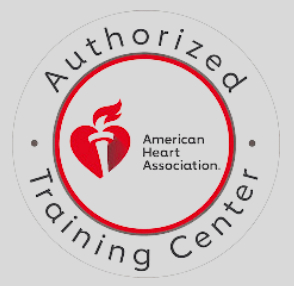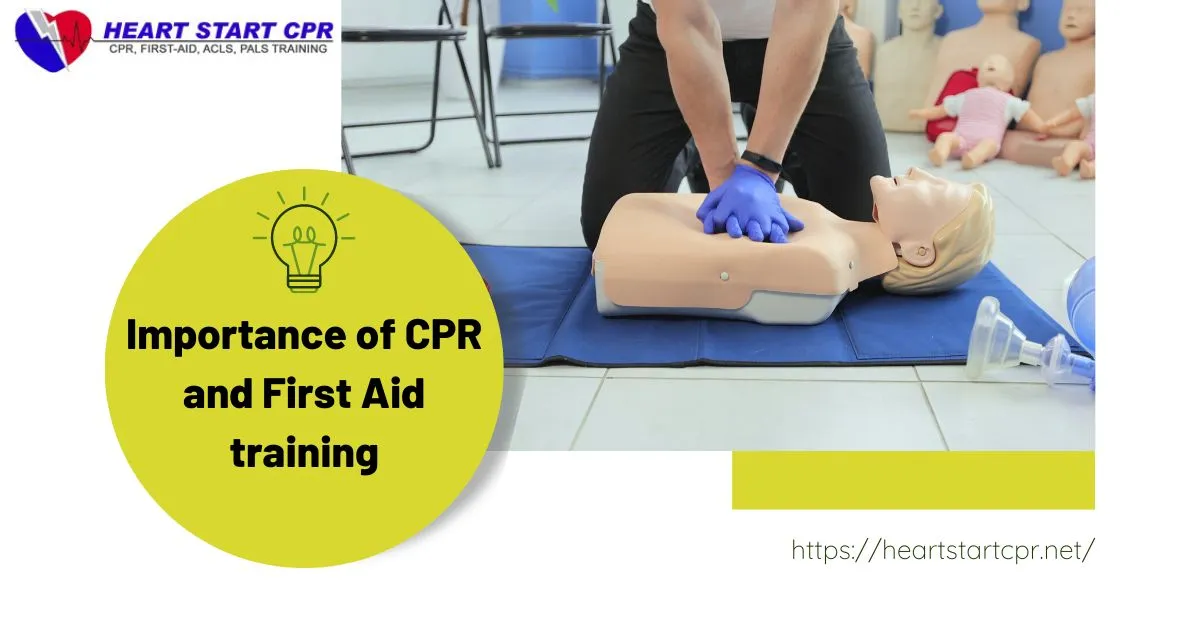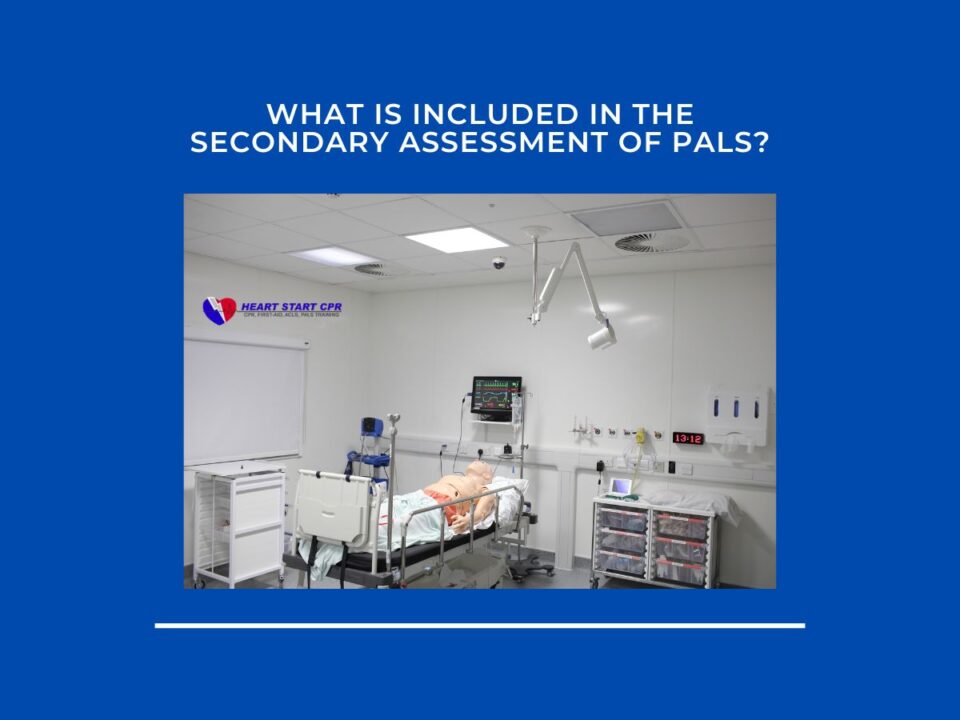
What Is BLS Training And Why Is It Important?
November 21, 2022
What is ACLS? Importance of ACLS for Healthcare Providers
November 29, 2022Importance of CPR and First Aid
Emergencies are unpredictable and can happen anytime and anywhere, and we must prepare for possible situations. Everybody must be able to handle emergencies until the medical team arrives. So we must know the importance of Cardiopulmonary Resuscitation (CPR) and first aid training in order to save a life. CPR and first aid training are vital because you won’t know when to assist a coworker, friend, or family member before it’s too late. Knowledge to perform CPR and First Aid is beneficial in any circumstance. The first aid and CPR training ensures that every emergency scenario is handled correctly and provides required first aid assistance until professional help arrives.
In some medical emergencies, having a basic understanding of First Aid and CPR can save a life. These methods, endorsed by organizations like the American Heart Association, teach you what to do if someone is choking, drowning, or having a heart attack. It is crucial to receive first aid and CPR training since these skills are vital in emergencies.
While immediate medical attention can save lives and stop injuries from getting worse, there are things you can learn in first aid and CPR training to help the care and healing process get off to a faster start.
Why Is It Important To Learn CPR?
Why is it important to learn CPR? CPR (cardiopulmonary resuscitation) is a medical technique that can save lives in emergencies like a heart attack or drowning where the breathing or heart stops beating. Saving lives is the only and main reason why learning CPR is important. In the United States, 350,000 individuals die from sudden cardiac arrest each year. This data is enough to show the importance of CPR training.
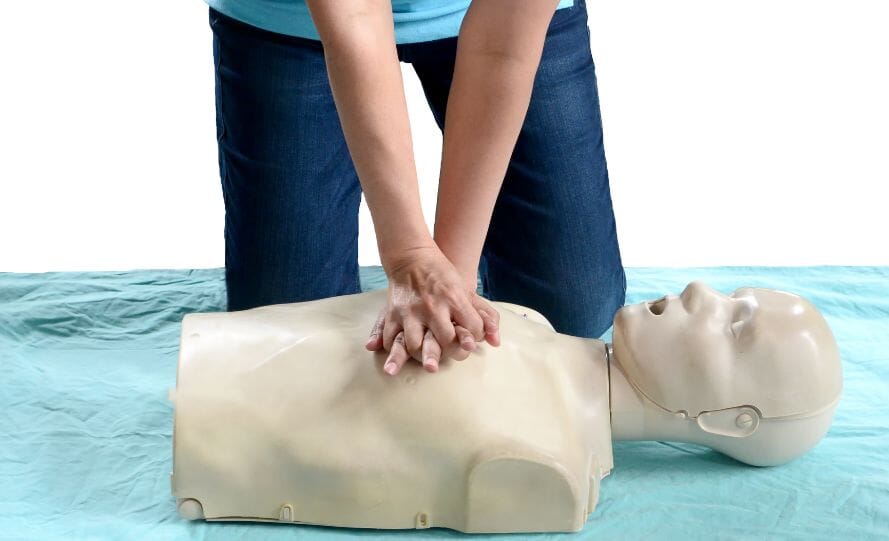
A person’s heart stops beating when in cardiac arrest. The heart does not pump blood to the rest of the body during cardiac arrest, including the lungs and brain. Without medical care, death occurs within minutes. CPR imitates the heart’s pumping action by using chest compressions. The chest compressions support the body’s natural blood circulation.
CPR training is essential for everyone, whether a parent, teacher, or staff member. Getting CPR training will help you to act bravely in emergencies. CPR may be necessary for several circumstances, such as suffocation, smoke inhalation, near drownings, accidents, and poisonings. You can perform cardiopulmonary resuscitation (CPR) effectively and immediately when required if you have the appropriate CPR certification or you can use hands-only CPR until the Emergency Medical Service (EMS) arrives.
Related post: First-aid for heart attack
5 Importance of CPR:
Keeping blood flow with the chest compressions, even just a little bit, increases the chance that the patient will survive until skilled medical personnel arrives on the scene. It is crucial to receive first aid and CPR training since these skills are vital in emergencies. Below we will be discussing some of the reasons why CPR training is important:
Knowing CPR helps to save Lives
Sudden Cardiac Arrest (SCA) or emergencies can occur to any person at any time and must receive immediate medical attention. CPR makes the difference between life and death if someone you love is not breathing. If you know first aid and CPR, you can save lives because delivering immediate CPR increases the chances of survival. By keeping the person’s brain functioning after cardiac arrest, CPR increases the chance that they will survive.
CPR prevents Brain Death
The heart stops flowing blood to the brain and other vital organs during sudden cardiac arrest. The patient becomes unconscious as the blood supply to the brain decreases. Without the proper flow of blood, brain damage can occur in as little as three minutes. There is the possibility of permanent brain death after nine minutes without blood flow. So we can perform high quality CPR, which keeps the blood circulating and reduces the damage to the patients.
Speedup Recovery Times
If immediate cardiopulmonary resuscitation (CPR) is started during the first two minutes following the cardiac arrest, the survival chances of the patients increase by two times. The patient will arrive at the hospital on time. Thus, the body will suffer less and return to normal if we start CPR shortly after cardiac arrest. Moreover, the risk of future cardiac arrest is low because the heart and brain suffer less.
You’ll Be Ready for a Cardiac Emergency
In around 37% of instances, a passerby witnesses a sudden cardiac arrest. You may be that person! Having CPR training gives you the information, self-assurance, and skills you need to aid someone in need while remaining calm in the face of a medical emergency. CPR training not only prepares you for emergency situations but also trains you to confidently act and take the lead in the resuscitation process. Coordinating smoothly is equally important as performing CPR because a rescuer may feel fatigued very soon which may lower the quality of the resuscitation process, at the position switching roles with another rescuer will be helpful. Before starting CPR a rescuer should assess the environment, clear the crowd, call 911/EMS, and find an AED machine which can only be achieved with coordination and leadership skills. In this situation, CPR training can effectively fulfill its role. CPR training can make a difference between lives and deaths by preparing you to act whenever you encounter sudden cardiac arrest.
Restores Blood Circulation
CPR involves chest compressions which help to pump oxygenated blood across the body including vital organs like the brain, kidney, and liver. Regular circulation of the blood in the body is important because it carries nutrients and oxygen. The nutrients that blood carries in our veins are important for human organs to survive which eventually increases the chances of successful revival or at least buys a few more time for medical professionals because immediate CPR bridges the gap until the medical help arrives.
Why is First Aid Important?
First Aid is urgent care that we give to the patient to prevent damage and future disabilities. First Aid is required in emergencies to save a victim’s life. Basic first aid training enables you to help injured people until emergency help arrives in the case of an accident or other medical emergencies. First Aid knowledge can be used at home, work, or public places. A community will be safer if more people get first Aid certified.
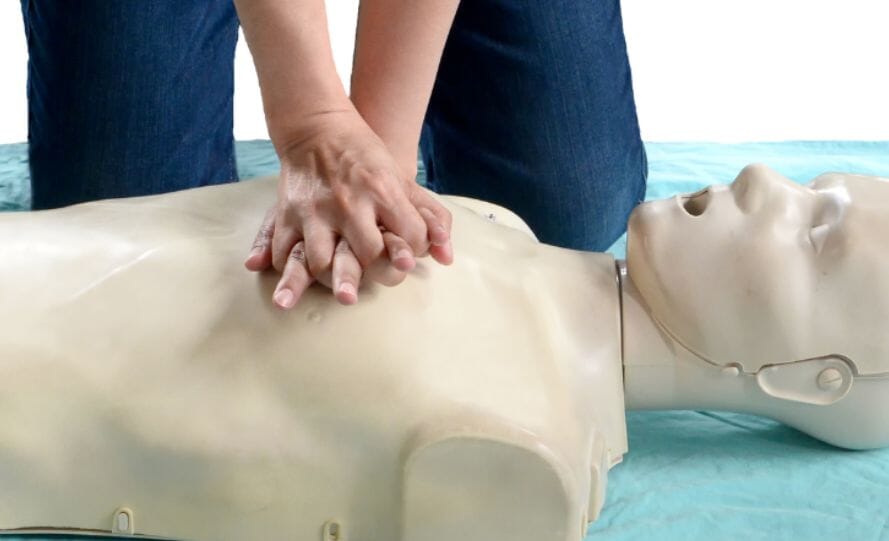
Getting your First Aid certification has advantages for you personally, your family, friends, coworkers, and even the community. Accidents and emergencies are not entirely preventable or unavoidable, as unpleasant as it is to bring them up.
Related Post: The Three C’s of First Aid Protocol
Importance of First Aid Training
First aid training is essential because it can help individuals provide immediate care to someone injured or experiencing a medical emergency. First aid can save lives, reduce the severity of injuries, and prevent further harm. Knowing how to properly assess a situation, provide appropriate care, and seek additional help can be crucial in a medical emergency. First aid skills are helpful in various settings, including at home, work, and public places. They can be essential for people who work in industries with a higher risk of injuries, such as construction or healthcare, or for those responsible for the well-being of others, such as parents or teachers. Some of the importance of first aid training are discussed below:
Knowing First Aid Saves Lives
It is true that essential first aid training aids in lifesaving. Not only that but providing adequate first Aid right away can speed up healing and determine whether a patient has a short or long-term disability. You will learn how to maintain calm in emergency circumstances and simple terminology to aid in remembering the actions you need to perform. Your confidence and comfort levels will increase due to first aid training, making you more productive and in charge when necessary.
Helps to comfort the patient
All accidents don’t require hospitalization, but that doesn’t mean the patient will not experience suffering and pain. A child screaming due to a wrist sprain or fever is in distress and pain. Knowing how to respond will assist in easing their suffering, even if you only use basic procedures like carefully bandaging or providing an ice pack. Showing your calm will also give people emotional help and support, increasing their sense of security and lessening their fear.
First Aid keeps things from getting worse.
Sometimes a victim’s condition worsens if basic first Aid is not provided immediately. Having basic first aid training, you can stabilize a victim until immediate medical personnel arrive by being capable of providing primary care. If a first aid kit is not accessible, you will learn how to utilize everyday things as instruments, enabling you to handle various scenarios.
Improve your standing at the job
Nowadays, many companies look for CPR and first aid training as job requirements. First Aid Training teaches individuals to identify and offer treatments for any life-threatening emergencies promptly. The ability to identify emergencies early will reduce accidents. So Employees must enroll in CPR and first aid training to develop safer habits and alert others in emergencies.
What are CPR and first aid training, and what to expect?
Healthcare workers, emergency responders, and public safety personnel must be trained in CPR and first aid. Whether you wish to study the fundamentals of lifesaving techniques or need the certification for employment requirements, anyone can obtain CPR and First Aid training through classes. A basic understanding of CPR and First Aid is also necessary for police officers, security guards, nurses, caregivers, daycare workers, lifeguards, flight attendants, correctional officers, laborers, and teachers.
Heart Start CPR provides CPR and first-aid training to students all over California. All the courses are taught by qualified professionals who can assist you in gaining the necessary knowledge and courage to handle the crisis. Our courses are enjoyable and relaxed.
Heart Start CPR trains over 6000 students annually. We give extra time and attention to students to achieve a 100% pass rate. We deliver our CPR and First Aid training classes in a friendly environment with individualized instruction in small groups. People who must respond to a cardiac emergency due to their professional duties or regulatory obligations should undergo Basic Life Support training class that covers CPR, AED, and First-Aid training.
The Lay Rescuer CPR AED (Automated External Defibrillator) training teaches how to operate an AED and perform CPR on adults, children, and infants. The course also includes Choking Relief. The content covered in the CPR AED and First Aid sessions is included in the Lay Rescuer First Aid CPR AED course.
Related Post: The Three C’s of First Aid Protocol
Find CPR and First Aid Training Near You
Please feel free to check out any of our CPR classes in San Francisco or call us at (877) 846-8277 if you’re interested in increasing the depth of your CPR knowledge. On-site training and skill-building sessions are provided by our network of accredited American Heart Association (AHA) Training Centers and Instructors.
Frequently Asked Questions
What are 5 important facts about knowing CPR?
Facts that you should know about the CPR are:
- More than 350,000 cardiac arrest occurs outside the hospital setting
- It’s easy to get CPR certified
- CPR saves lives
- Children as young as 9 can effectively give CPR
- Good Samaritan law protects rescuer
What is the most important thing in CPR?
Chest compressions are the cornerstone of CPR, and they take precedence in its execution. Even if you are not certified in CPR, you can still provide vital assistance through hands-only CPR, which focuses solely on chest compressions and does not involve rescue breaths or the use of an AED (Automated External Defibrillator). Consistent and uninterrupted chest compressions are a crucial component of effective CPR.
Who can learn CPR?
CPR training is accessible to anyone, and there are no special prerequisites for enrolling in a CPR training course. Even children as young as 9 years old can learn to administer effective CPR. Additionally, in many states across the US, there are compulsory CPR training laws for students in schools, ensuring that they receive this essential life-saving education before graduating.


